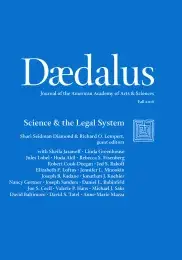Universities: The Fallen Angels of Bayh-Dole?
The Bayh-Dole Act of 1980 established a new default rule that allowed nonprofit organizations and small businesses to own, as a routine matter, patents on inventions resulting from research sponsored by the federal government. Although universities helped get the Bayh-Dole Act through Congress, the primary goal, as reflected in the recitals at the beginning of the new statute, was not to benefit universities but to promote the commercial development and utilization of federally funded inventions. In the years since the passage of the Bayh-Dole Act, universities seem to have lost sight of this distinction. Their behavior as patent seekers, patent enforcers, and patent policy stakeholders often seems to work against the commercialization goals of the Bayh-Dole Act and is difficult to explain or justify on any basis other than the pursuit of revenue.
The Bayh-Dole Act of 1980 established a new default rule that allowed nonprofit organizations and small businesses to own, as a routine matter, patents on inventions resulting from research sponsored by the federal government.1 The new law replaced divergent and changeable rules and practices of different federal funding agencies. It made ownership more predictable and reduced the need for case-by-case negotiations to secure rights.2
University patent ownership featured prominently in subsequent commentary on the Bayh-Dole Act, but the initial choice to limit the new rule to nonprofit organizations and small businesses was a matter of political expediency. Although universities helped get the Bayh-Dole Act through Congress, the primary goal, as reflected in the recitals at the beginning of the statute, was not to benefit universities but to promote the commercial development and utilization of federally funded inventions.3 It was part of a broader initiative to give patent ownership to research contractors, rather than to federal funding agencies, in order to accelerate commercial development. By applying the new default ownership rule only to nonprofit organizations (including universities) and small businesses, advocates sidestepped decades-old objections to giving patent monopolies to powerful business interests when inventions were made at taxpayer expense. Had large businesses been included in Bayh-Dole, an anonymous Senate aide confided to a reporter, “the bill would never have [had] a chance of passing.”4 But the limitation was only temporary. Soon enough, the new policy was extended to large businesses, first quietly in an executive order signed by President Ronald Reagan, and then more durably in an inconspicuous amendment to the statute.5 . . .
Access the full issue here.
